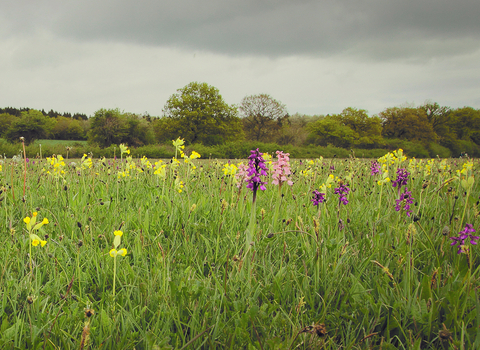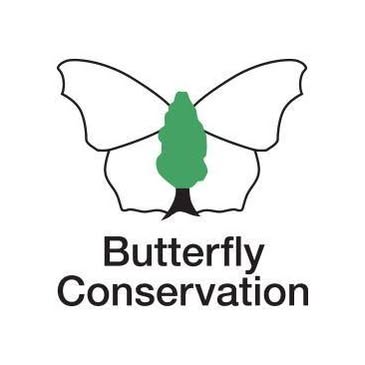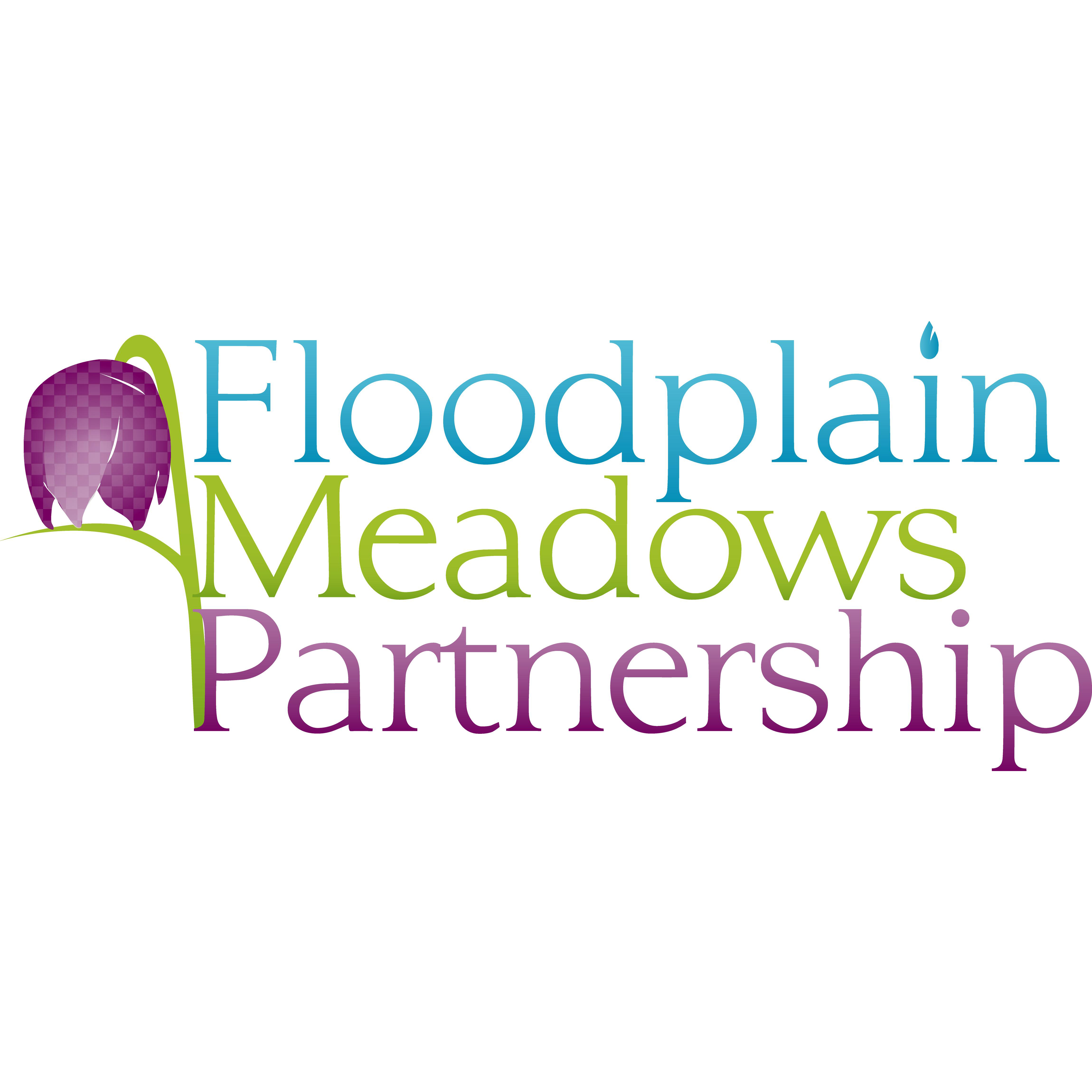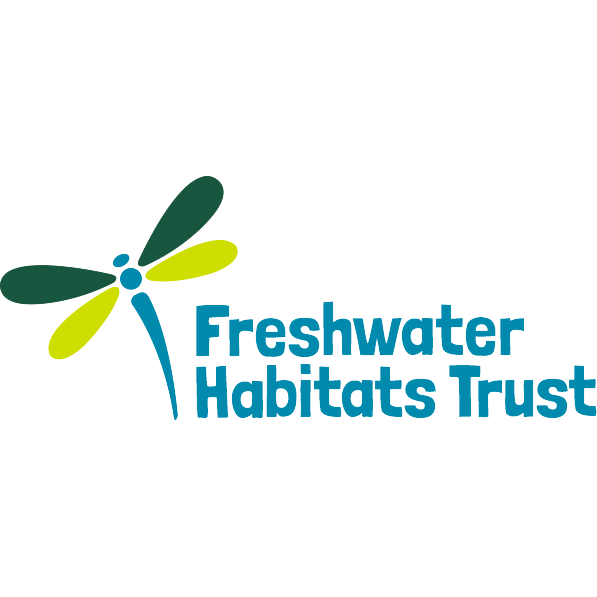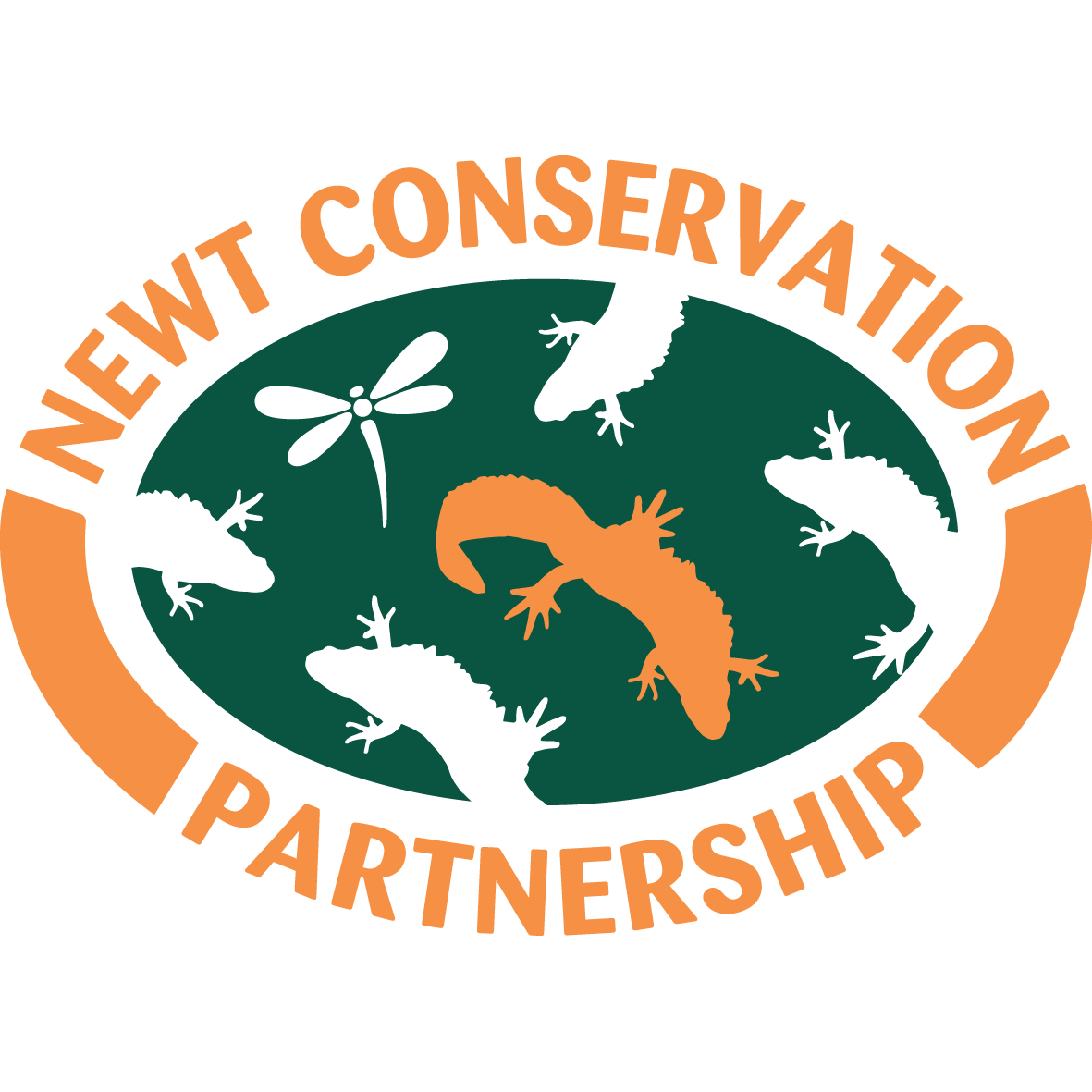A newly funded and exciting initiative to restore and connect communities, nature, and heritage in this incredible landscape sitting across the Buckinghamshire and Oxfordshire border.
The landscape
The 300km2 Bernwood Otmoor Ray (BOR) landscape lies between the large urban centres of Aylesbury, Bicester, and Oxford. It is one of the last ecologically coherent landscapes in southern England with the scope for nature recovery and habitat reconnection at a strategic scale. It contains nationally important but increasingly fragmented habitats such as ancient woodland, species-rich grassland and floodplain meadows. Rare species supported by these habitats include black and brown hairstreak butterflies, curlew, Bechstein’s bats and great crested newts. However, it is under threat from intensive development, historic agricultural practises, and pollution – especially along the River Ray.
The landscape also has a rich human heritage, with a unique character and sense of place. Recent archaeological evidence shows that the area has been inhabited since at least Roman times and has interesting agricultural, industrial, and military heritage such as ridge and furrow field systems, historic kilns, and wartime training camps. This project seeks to connect the 106,000 people living in the area with the full breadth of this natural and cultural history.
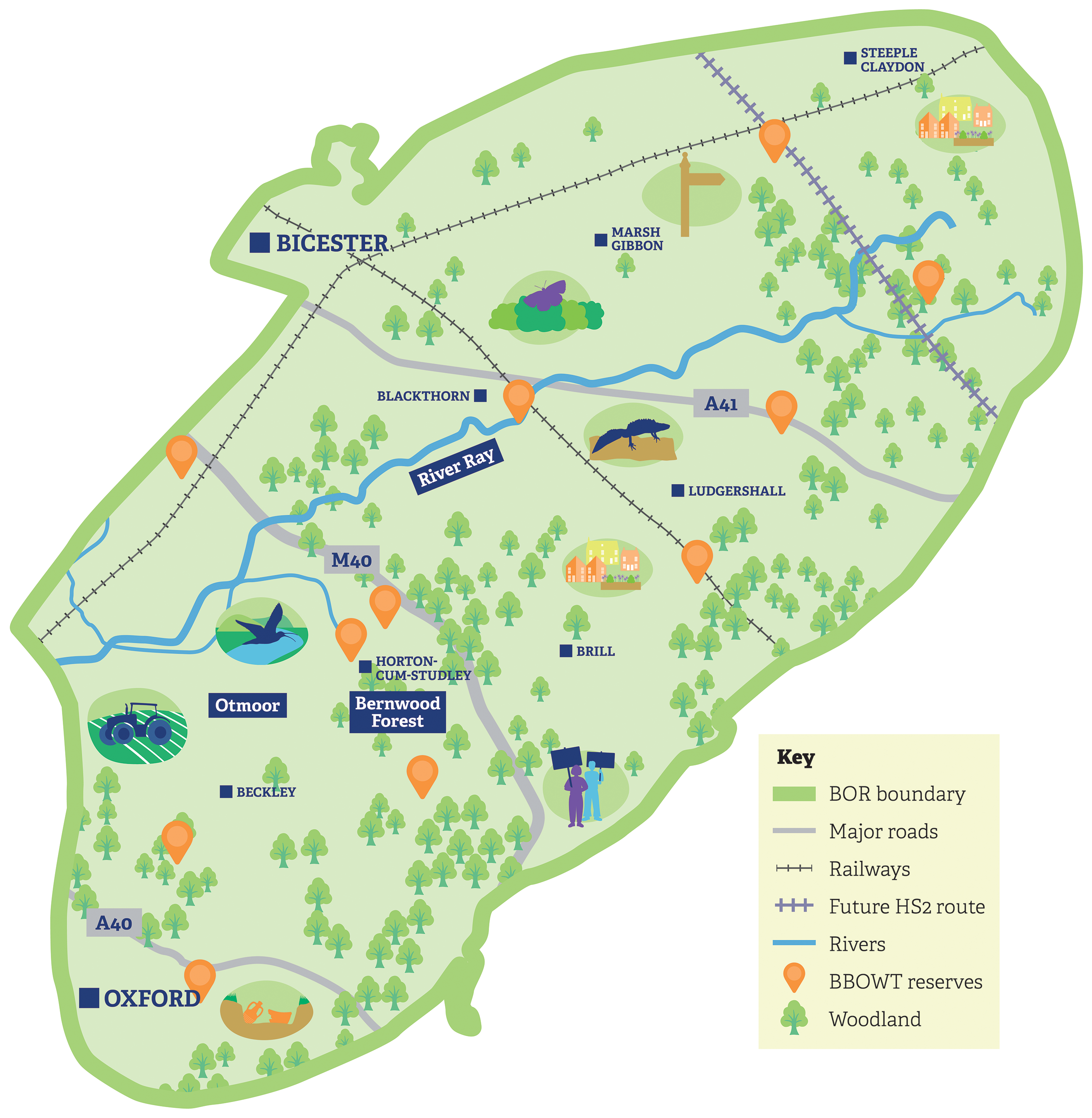
Partnership working
Reconnecting Bernwood, Otmoor and the Ray (RBOR) is an ambitious landscape-scale partnership project to restore, reconnect and rediscover this diverse but threatened and undesignated rural and urban landscape. Our partnership is made up of:
We are also lucky to be working with:
- The Ray Farmer Cluster, a group formed in 2022, which currently has a 40-strong membership of local landowners across the project area.
- A number of local grassroots groups who look after greenspaces, deliver green social prescribing, work with young people, and many others.
- Statutory bodies - the Environment Agency and Natural England.
- Local councils - primarily the Oxfordshire Local Nature Partnership and the Buckinghamshire and Milton Keynes Natural Environment Partnership, as well as other officers and departments within these councils, including those working on the Local Nature Recovery Strategies (LNRSs).
- Parish Councils and Community boards (Buckinghamshire).
Some of these are new relationships, but many have been involved since the early days of RBOR’s development. In 2022, we commissioned a feasibility study with funding from Buckinghamshire Council to explore options for this programme. Forty local groups fed into this and shaped our current priorities. The project also builds on BBOWT’s previous Bernwood Forest and Ray Valley Living Landscape project to create something more ambitious and representative of the area, and inclusive of many more stakeholders.
How we get there
We are working to deliver an ambitious, co-created programme of work that transforms the BOR landscape from a threatened region under increasing pressure from development and pollution to a vibrant, nature-filled landscape where communities and visitors can engage with the fascinating heritage.
The programme is framed around the vector of connection, and has four main strands:
- Connecting nature to nature through habitat creation and restoration.
- Connecting nature and people through access, creative interpretation, custodianship, and citizen science.
- Connecting people to each other throughout the past, present, and future by engaging with the landscape’s heritage of archaeology, activism, storytelling, and craft.
- Developing a strong network of partners and stakeholders to continue to care for and steward the landscape in a context of climate change, nature loss, polarisation, cost-of-living, and overdevelopment.
The story so far
In 2024, we won development phase funding from the National Lottery Heritage Fund. Since this funding started, the team have been hard at work getting out and about across the landscape. We have been meeting landowners and looking around their land for opportunities to create habitats and improve access, and meeting community groups across Oxford, Bicester, and some of the villages across the landscape to explore projects around access, custodianship, and heritage.
Our approach to working with communities is informed by community organising. Whilst having an application deadline for delivery phase funding precludes doing pure community organising, we are using the principles of co-design to ensure that project ideas come from and are developed with the communities we are working with. This is vital to ensure that all projects are wanted and needed and therefore will hopefully persist beyond the lifetime of the current funding.
Projects
We are currently developing eleven projects:
Nature to nature
1. Reconnecting and revitalising Royal Forests
Bernwood Forest is a historic royal hunting forest with records dating back to at least the 10th century, when it was a favoured place of King Edward the Confessor (famously defeated in 1066 during the Norman invasion). Over the centuries, Bernwood Forest has been increasingly fragmented and today primarily exists at the Forestry England site of Shabbington and Waterperry Woods. Our project is working with local landowners to connect up the existing fragments of Bernwood Forest through planting new woodland, in-field trees, and agroforestry.
2. Fantastic Floodplains and Freshwater
The River Ray and its floodplain are very disconnected from each other, with the Ray being one of the worst quality and most modified tributaries of the River Thames. In this project, BBOWT, Floodplain Meadows Partnership, Freshwater Habitats Trust, Newt Conservation Partnership, RSPB and Wild Oxfordshire are establishing locations for the creation of freshwater habitats such as wetlands, ponds, clearing streams and channels, and floodplain meadow restoration. We are also working on specific measures to protect and encourage more curlews in the area, as well as other wading birds and great crested newts.
3. Hedges and Edges
The BOR landscape is one of the only places in England where all five species of hairstreak - black, brown, green, purple, and white-letter - are found. In partnership with Butterfly Conservation and Wild Oxfordshire, we are surveying for all five species, delivering hedge condition survey workshops to volunteers and landowners, and planning hedge creation and maintenance with landowners.
An exciting aspect of this project is the innovative use of UV torches to survey for black and brown hairstreak larvae, which glow bright blue under UV light. We ran a workshop on this in April 2025, and the subsequent survey effort was picked up by local media.
Nature and people
4. Wildlife Watchers
Earthwatch Europe are leading this project to strengthen and build the community of citizen scientists that is already active in this area. Currently, we are focussing on water quality testing, with discussions to bring in soil testing, and other areas of citizen science.
5. Next Gen Nature
Our focus for this project is young people aged 13-17 and 18-21 - groups who are generally the least engaged with conservation and nature. The project will increase nature connection and opportunities to get out into nature for these age groups and provide opportunities and information to kickstart careers in conservation. We are currently working on internships, a work experience programme, and exploring green careers fairs, as well as working with schools and young people to determine what they’d like to see.
6. Urban Connections
A significant number of wards in Bicester and Oxford are ranked within the lowest 20% of deprived areas in the UK. We want to work with these communities - and other urban communities - to co-design opportunities to access and connect with greenspaces and the countryside for recreational and wellbeing benefits.
7. Increasing Access, Reducing Pressure
Access to the countryside in this landscape is increasingly difficult due to cuts to public transport, lack of time, and knowledge of where people can go. This is increasingly important with the large number of new developments being built and planned around Oxford and Bicester.
On the flipside, there are too many people often visiting extremely sensitive sites for nature and having a bad impact on their condition. In this project, we are working with local reserve managers and greenspaces to support improvements to access in the right places and reduce the negative impacts of recreational activities on others.
8. Community Custodianship of Greenspaces
There are already many groups caring for greenspaces locally. With this project, we are working with those community groups - and communities who may want to form a group - to look after or start new spaces like community gardens, parks, woodlands, and recreation grounds. We are developing a funding scheme to allow them to make small purchases to be able to look after and further develop their spaces in line with their goals.
People to people
9. Archaeology and Geology
From Roman kilns and roads on Shotover Country Park to ammunition stores in the Bernwood Forest, the BOR landscape has a rich archaeological history. We are exploring this - and the wider history of the landscape - and looking into bringing communities into this through potential community dig sites, and interpretation activities such as guided walks and signage.
10. Activism past, present and future
The BOR landscape has a strong history of environmental activism, from the Otmoor Riots in the 1830s to the effort by Friends of the Earth to reroute the M40, to more recent protests against HS2 and sewage pollution of local rivers. Led by local historian Dr Helena Chance, this project is exploring that history and how we can engage with it, as well as how we can support activism and advocacy for nature in the present and future.
11. Storytelling
Beyond the physical, there are many long-held oral histories and memories of this landscape. Farming families have worked this land for generations, and people who have been here for a long time or moved here recently all have stories about the landscape, its nature, and their interaction with it - as well as encouraging visitors and residents to think about what non-human beings also call the BOR landscape home. We are aiming to capture and display these, so they are not lost to the passage of time.
Get in touch
If you would like to find out more or get involved, please contact us.

Glow-in-the-dark caterpillars set to shine a light on butterfly secrets
A unique new conservation project in the Buckinghamshire countryside could be about to start a revolution in conservation.
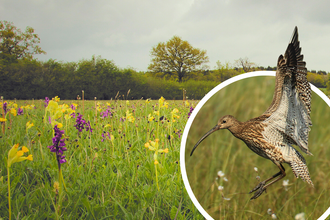
Wildlife charity receives half a million pounds for ambitious nature recovery project
The Berkshire, Buckinghamshire & Oxfordshire Wildlife Trust (BBOWT) has been awarded £512,182 to restore nature across the…

Connecting communities in the Bernwood, Otmoor and Ray area
Lily O’Neill (Community Networking Officer at BBOWT) and Rhiannon Evetts (Nature Recovery Engagement Officer at Wild Oxfordshire)…

Reconnecting Bernwood, Otmoor and the Ray is made possible with The National Lottery Heritage Fund. Thanks to National Lottery players, we can build on the vision for nature's recovery in this very special landscape.

